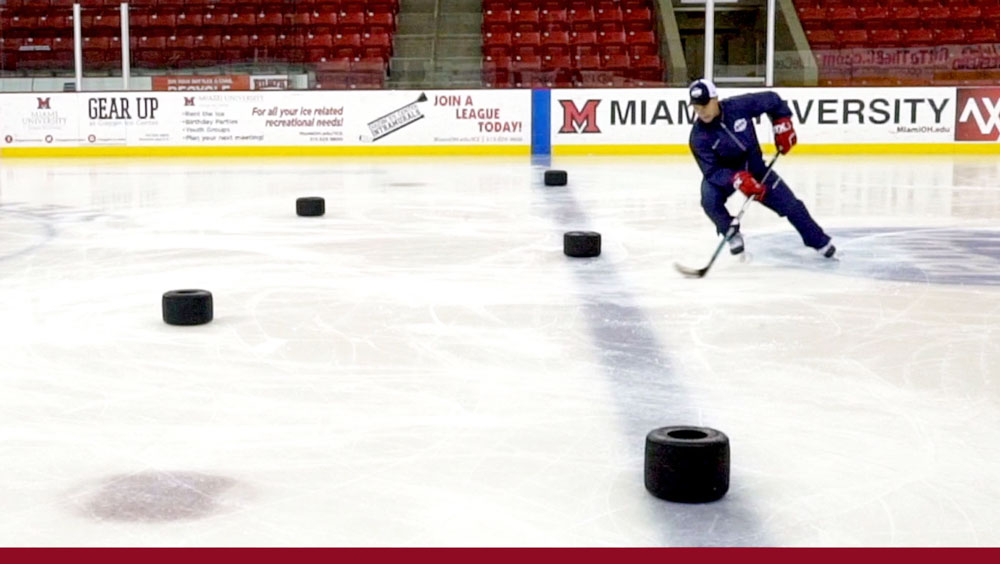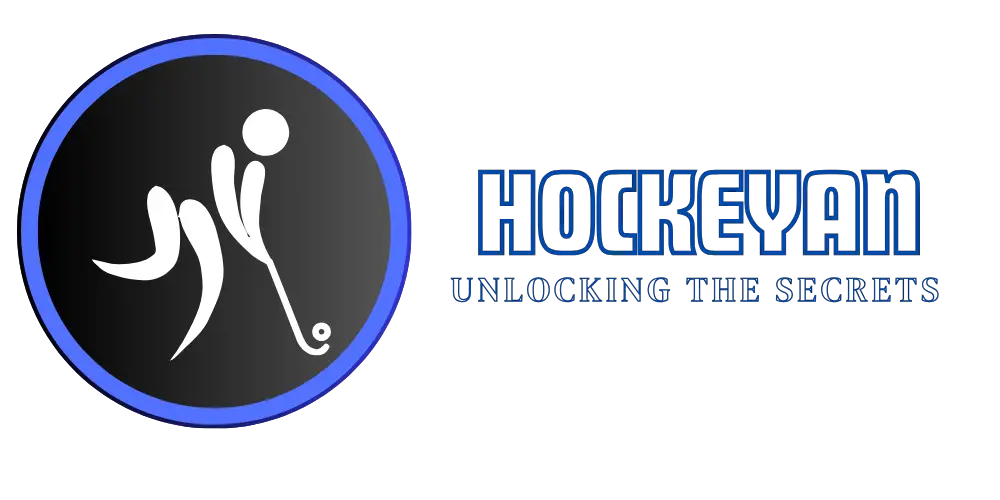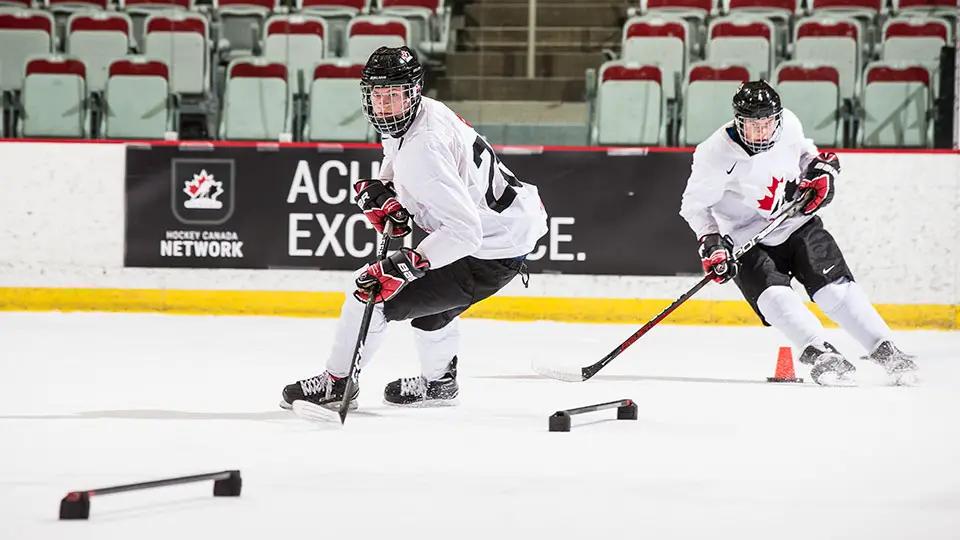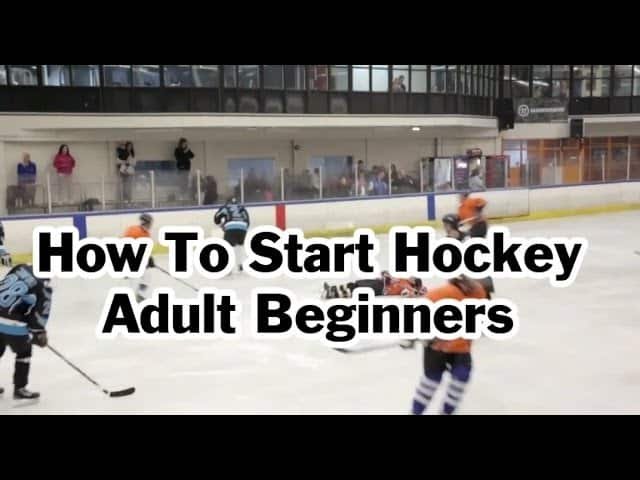Ice hockey skills include skating, stickhandling, passing, shooting, and checking. Mastering these skills is essential for success in the sport.
Ice hockey is a fast-paced and physically demanding sport that requires a combination of various skills. Skating is the foundation, allowing players to move swiftly and change direction quickly. Stickhandling enables precise control of the puck, while accurate passing is crucial for team play.
Shooting skills determine a player’s ability to score goals, and checking involves physical tactics to disrupt opponents. Developing these skills through consistent practice and training can significantly improve a player’s performance on the ice. Whether you’re a beginner or an advanced player, focusing on these key areas will help you excel in ice hockey.
Skating Techniques
Mastering skating techniques is crucial in ice hockey. Skating forms the foundation of all other skills. This section will dive into essential skating techniques. You will learn about forward skating, backward skating, and edge control.
Forward Skating
Forward skating is the most basic skill in ice hockey. Skaters push off with one foot and glide on the other. This gives them speed and control. Keep your knees bent and your body low. This helps with balance and speed.
- Bend your knees
- Push off with your toes
- Keep your head up
Practice these tips to improve your forward skating. Consistent practice leads to better performance on the ice.
Backward Skating
Backward skating is important for defence players. It allows you to keep an eye on the puck. Start by bending your knees and leaning slightly forward. Push off with the inside edges of your skates. Make sure your strides are short and quick.
- Bend your knees
- Lean slightly forward
- Push with inside edges
Practice makes perfect. Spend time skating backwards to build confidence.
Edge Control
Edge control helps you turn quickly and stop fast. Use your skate edges to change direction. There are two edges on each skate: the inside and the outside. Learn to shift your weight from one edge to the other.
| Edge | Use |
|---|---|
| Inside Edge | Turning and stopping |
| Outside Edge | Balancing and gliding |
Mastering edge control makes you a more agile player. Practice turning and stopping using both edges.

Credit: www.omha.net
Stick Handling
Stickhandling is a crucial skill for any ice hockey player. It helps you control the puck, evade defenders, and create scoring opportunities. Good stick handling can make a significant difference in your game performance.
Basic Dribbling
Basic dribbling is the foundation of stick handling. It involves moving the puck back and forth using the blade of your stick. This helps maintain control while skating. Here are some tips:
- Keep your head up: Always watch the play and your surroundings.
- Use soft hands: Gently guide the puck with your stick.
- Practice stationary: Start by practicing while standing still.
- Move while dribbling: Progress to dribbling while skating.
Mastering basic dribbling builds confidence. It allows you to focus on more advanced techniques.
Advanced Moves
Once you are comfortable with basic dribbling, you can progress to advanced moves. These techniques help you outsmart defenders and create scoring chances. Some advanced moves include:
- The Deke: A fake move to trick the defender.
- The Toe Drag: Pulling the puck in with the toe of your blade.
- The Spin-o-rama: Spinning around while maintaining puck control.
Practice these moves regularly. It will improve your agility and deception on the ice.
Puck Protection
Puck protection is essential for maintaining possession under pressure. It involves using your body and stick to shield the puck from opponents. Key techniques include:
- Body positioning: Keep your body between the puck and the defender.
- Stick positioning: Use your stick to keep the puck out of reach.
- Skating techniques: Use tight turns and quick stops to evade checks.
Effective puck protection can buy you time. It helps you find open teammates and make plays.
Practice these stick-handling skills regularly. It will make you a more effective and confident player on the ice.
Passing And Receiving
Passing and receiving are essential skills in ice hockey. They help players move the puck efficiently. Mastering these skills can make the difference between winning and losing.
Types Of Passes
There are several types of passes in ice hockey. Each type serves a unique purpose.
- Forehand Pass: The most common type. It’s accurate and powerful.
- Backhand Pass: Useful when under pressure. It’s harder to intercept.
- Saucer Pass: Ideal for passing over sticks. It lifts the puck slightly.
- Drop Pass: Used to deceive opponents. The puck is left behind for a teammate.
Receiving Strategies
Receiving a pass is just as important as making one. Proper technique ensures the puck stays in control.
- Soft Hands: Absorb the puck with a soft touch. This prevents it from bouncing away.
- Stick Position: Keep your stick blade on the ice. It helps catch the puck smoothly.
- Body Position: Face the passer. This makes it easier to receive and continue the play.
Improving Accuracy
Accurate passing is crucial in ice hockey. It improves team coordination and scoring chances.
| Technique | Benefit |
|---|---|
| Practice Drills | Regular drills enhance muscle memory. |
| Visual Focus | Keep your eyes on the target. It increases precision. |
| Follow Through | A proper follow-through guides the puck accurately. |
| Communication | Talk with teammates. It ensures everyone is ready for the pass. |
By focusing on these aspects, players can significantly improve their passing and receiving skills. This leads to a more cohesive and effective team performance.
Shooting Skills
Mastering shooting skills is crucial for every ice hockey player. Good shooting can make the difference between winning and losing. Below, we discuss three essential shooting techniques: the wrist shot, slap shot, and backhand shot.
Wrist Shot
The wrist shot is one of the most accurate shots in ice hockey. Players use the flex of their stick to release the puck. The puck should leave the stick quickly and with precision.
- Start with the puck on the heel of your stick.
- Shift your weight from your back foot to your front foot.
- Flick your wrist to release the puck.
Slap Shot
The slap shot is known for its power and speed. It involves a big wind-up and a hard swing. This shot can surprise goalies and break through defenses.
- Position the puck slightly behind you.
- Take a big backswing with your stick.
- Strike the ice just before the puck.
- Follow through to generate power.
Backhand Shot
The backhand shot is less common but very effective. It can catch goalies off guard because it’s harder to predict.
| Steps | Details |
|---|---|
| 1. Hold the puck on the backhand side of the blade. | This provides control. |
| 2. Use a quick flick of the wrist. | This adds speed. |
| 3. Aim for the corners of the net. | Goalies find it hard to block. |
Focus on these shooting skills to improve your ice hockey game. Practice regularly to become a better shooter.
Defensive Techniques
Ice hockey is not just about scoring goals; it’s also about preventing them. Mastering defensive techniques is crucial for any player. Defence requires quick thinking, agility, and strategic positioning. Let’s dive into some key defensive skills that can elevate your game.
Positioning
Good positioning is the cornerstone of effective defence. A well-positioned player can anticipate the opponent’s moves. This skill involves staying between your opponent and the goal. Your body should always face the puck. Maintain a low stance for better balance.
Use the following tips to improve your positioning:
- Stay within the defensive zone.
- Keep an eye on the puck and the player.
- Move your feet constantly to stay in the play.
Stick Checking
Stick checking is a vital skill for disrupting the opponent’s play. It involves using your stick to poke, sweep, or lift the opponent’s stick. This technique helps in gaining control of the puck.
Types of stick checks include:
- Poke Check: Extend your stick to poke the puck away.
- Sweep Check: Sweep your stick along the ice to intercept the puck.
- Lift Check: Lift the opponent’s stick to gain puck control.
Shot Blocking
Blocking shots is a brave and essential defensive action. It requires positioning your body in the path of the puck. This can prevent the puck from reaching the goal.
Effective shot-blocking techniques include:
- Kneeling Block: Drop to one knee to cover more ice.
- Slide Block: Slide across the ice to block low shots.
- Stick Block: Use your stick to deflect the puck.
Always keep your eyes on the puck. Wear the right protective gear to minimize injuries.
Offensive Tactics
Mastering offensive tactics in ice hockey is crucial. These skills help score goals and win games. Here, we focus on three key offensive tactics: Creating Space, Cycling the Puck, and Breakaways.
Creating Space
Creating space is essential in ice hockey. It allows players to manoeuvre and make plays. Players can create space using quick movements and sharp turns. They can also use dekes and fakes to confuse defenders.
- Quick movements
- Sharp turns
- Dekes and fakes
These techniques help players avoid defenders. This opens up scoring opportunities.
Cycling The Puck
Cycling the puck keeps the defence moving. It helps maintain control of the puck in the offensive zone. Players pass the puck along the boards and behind the net. This tactic tires out the defence.
- Pass the puck along the boards.
- Move behind the net.
- Look for scoring chances.
Effective cycling creates openings for shots on goal. It is a team effort that requires good communication.
Breakaways
A breakaway is an exciting play. It happens when a player gets past all defenders. The player then faces the goalie one-on-one. Speed and skill are vital for a successful breakaway.
| Key Elements | Description |
|---|---|
| Speed | Quick acceleration to get past defenders |
| Control | Maintain puck control while skating fast |
| Shooting | Accurate shot to beat the goalie |
Breakaways often lead to thrilling goals. They can change the momentum of the game.
Positional Play
Understanding positional play is key in ice hockey. Each player on the ice has specific roles and responsibilities. Mastering these roles ensures team success.
Forward Roles
Forwards are the main offensive players. They aim to score goals. There are three types of forwards: centre, left-wing, and right wing. Each position has unique duties.
- Center: The centre takes face-offs and supports both offence and defence.
- Left Wing: The left-wing attacks from the left side and defends on the left.
- Right Wing: The right-wing attacks from the right side and defends on the right.
Forwards must skate fast and handle the puck well. They also need to pass accurately and shoot powerfully. Good forwards always think ahead and make quick decisions.
Defenseman Roles
Defensemen help protect their team’s goal. They stop the opposing team from scoring. There are two defensemen on the ice: the left defenseman and the right defenseman.
- Left Defenseman: Guards the left side of the ice. Prevents attacks from the right wing of the opposing team.
- Right Defenseman: Guards the right side of the ice. Prevents attacks from the left wing of the opposing team.
Defensemen need to block shots and clear the puck from their zone. They must also support forwards in creating offensive plays. Strong skating and good positioning are crucial skills for defensemen.
Goaltender Basics
The goaltender, or goalie, is the last line of defence. Their main job is to stop the puck from entering the net. Goalies need quick reflexes and good hand-eye coordination.
Key skills for goalies include:
- Positioning: Always be in the right spot to block shots.
- Rebound Control: Ensure the puck doesn’t bounce back to attackers.
- Communication: Guide the defensemen and alert them of threats.
Goalies wear special gear to protect themselves. This includes pads, gloves, and a helmet with a cage. Being a good goalie takes practice, focus, and bravery.

Credit: www.youtube.com
Physical Conditioning
Ice hockey is a fast-paced and physically demanding sport. To excel, players need to maintain peak physical conditioning. This includes strength training, endurance drills, and flexibility exercises. These components help players perform at their best and avoid injuries.
Strength Training
Strength training is crucial for ice hockey players. It helps build muscle and improve power. Here are some key exercises:
- Squats: Develop leg and core strength.
- Deadlifts: Enhances lower body power.
- Bench Press: Builds upper body strength.
- Pull-Ups: Strengthens back and arms.
Incorporate these exercises into your routine. Aim for 3 sets of 10 reps each.
Endurance Drills
Endurance is vital for keeping up with the game’s pace. Below are some effective drills:
- Interval Sprints: Sprint for 30 seconds, then rest for 30 seconds. Repeat 10 times.
- Stair Climbing: Climb stairs for 20 minutes. This improves leg endurance.
- Cycling: Cycle for 30 minutes at a steady pace. Great for cardiovascular health.
Perform these drills at least three times a week.
Flexibility Exercises
Flexibility reduces the risk of injuries and improves range of motion. Here are some useful exercises:
- Hamstring Stretch: Sit and reach for your toes. Hold for 30 seconds.
- Quad Stretch: Stand and pull one foot to your buttocks. Hold for 30 seconds.
- Shoulder Stretch: Pull one arm across your chest. Hold for 30 seconds.
- Hip Flexor Stretch: Kneel on one knee and push hips forward. Hold for 30 seconds.
Include these stretches in your daily routine. Flexibility aids in quick movements on the ice.

Credit: www.icehockeysystems.com
Frequently Asked Questions
What Are The Basic Ice Hockey Skills?
The basic ice hockey skills include skating, shooting, passing, and stickhandling. Skating is the foundation. Shooting and passing require accuracy. Stickhandling enhances puck control.
How Can I Improve My Ice Hockey Skating?
To improve skating, practice edge work, crossovers, and quick starts. Focus on balance and agility. Consistent practice is key.
What Is Stickhandling In Ice Hockey?
Stickhandling involves controlling the puck with your stick. It requires dexterity and coordination. Practice drills to enhance your puck control skills.
How Important Is Shooting Accuracy In Ice Hockey?
Shooting accuracy is crucial for scoring goals. Practice different shot types. Focus on precision and power to improve your scoring chances.
Conclusion
Mastering ice hockey skills takes practice and dedication. Focus on skating, stickhandling, and shooting techniques. Consistent training leads to improvement. Enjoy the journey and celebrate your progress. Keep pushing yourself to become a better player. Your hard work will pay off on the ice.




